Petunia plants are costly to buy and easily grown from seed, so grow them at home. Here’s how to start your own petunias from seed!
More seed starting resources:
Click here for more tips about how to start seeds on a budget.
Petunia plants are costly to buy and easily grown from seed, so grow them at home. Here’s how to start your own petunias from seed!
Click here for more tips about how to start seeds on a budget.
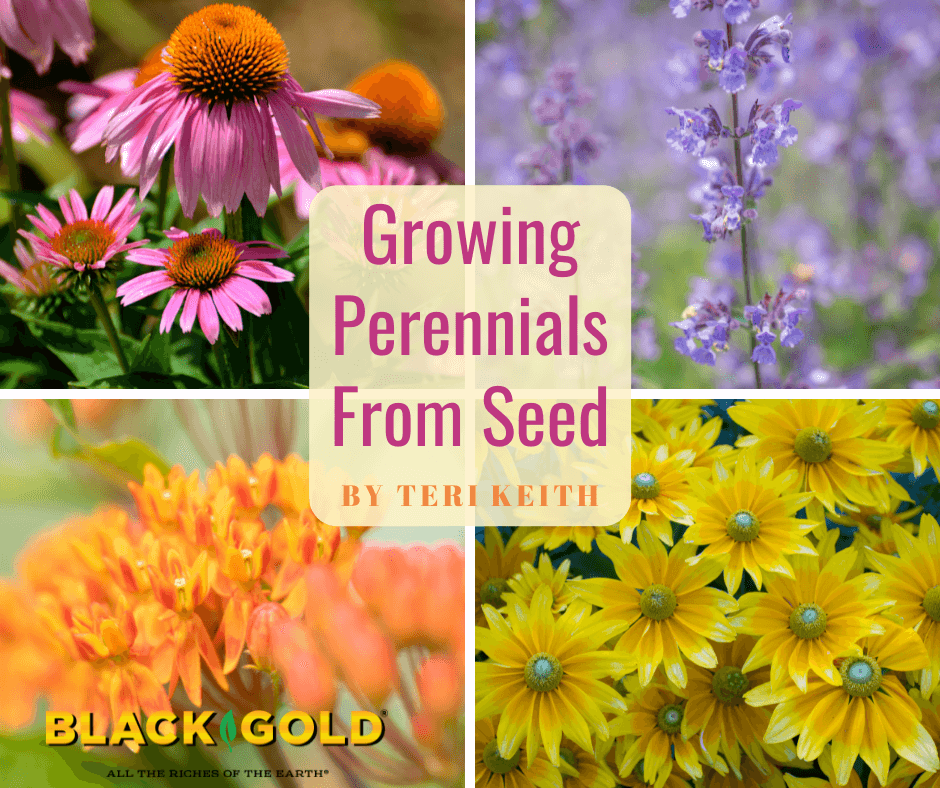
Spring will be here before you know it, and this means it is time to buy this year’s perennials, whether old favorites or new ones you haven’t tried before. The problem is how much they cost. To plant a modest new bed of perennials, you can expect to pay over $100 for just eight to ten plants. Growing them from seed is much more cost-effective if you know what to grow and how to grow them.
As a lifelong gardener and former perennial nursery manager, I am sensitive to the cost of these garden staples. Perennial plants seem to get more expensive year after year. For example, I planned to buy several butterfly weeds (Asclepias tuberosa) this season to help the struggling Monarch butterflies. But, even small pots are $8 to $10 per plant or more. Most designers recommend planting garden flowers in groups of three or more, so that is a minimum of $30.00 for just three plants, and more is always better. That is a lot of money! In turn, butterfly weed seeds are usually no more than $3.50 for a packet of 50 seeds. Wouldn’t it be nicer if you could grow them from seed and save a fortune? Here’s how to do it.
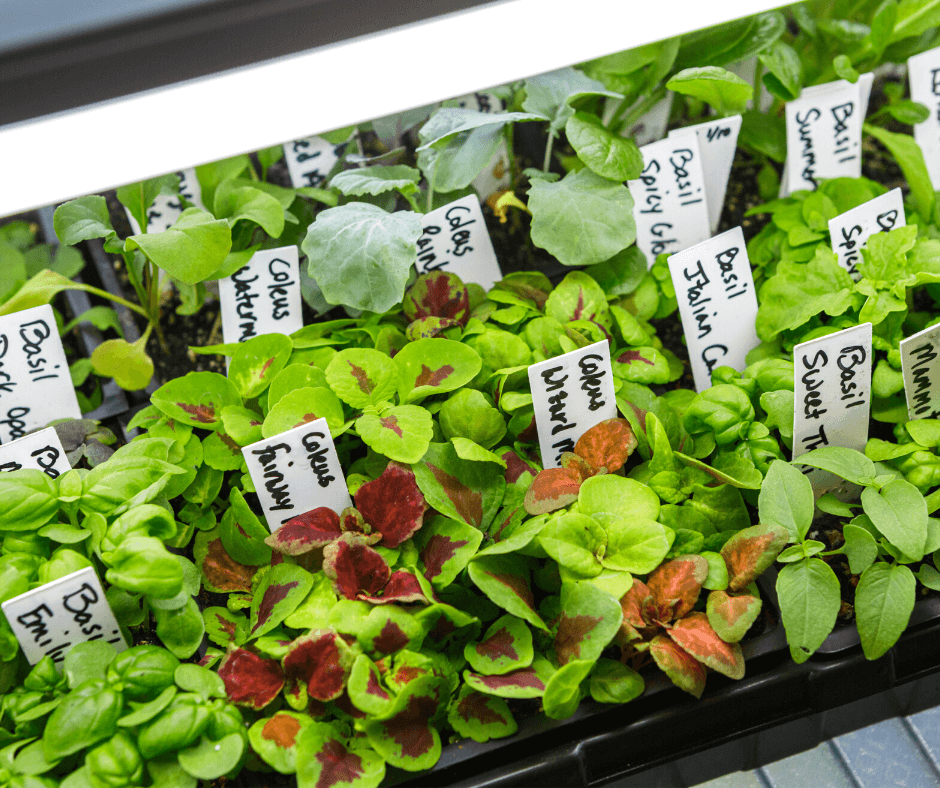
There are a few essentials that home growers need if they are not fortunate enough to own their own greenhouse, conservatory, or sunroom. The items are low-cost and most can be used year after year. I do not recommend windowsill seed starting if you intend to grow seedlings to planting-sized plants because even south-facing windows don’t provide enough uniform light to keep seedlings from stretching and becoming spindly. Fancy seed starting racks or systems can be purchased, but I have always found the following materials to work just fine for all of my seed starting needs, and I’ve been doing this for nearly 50 years.
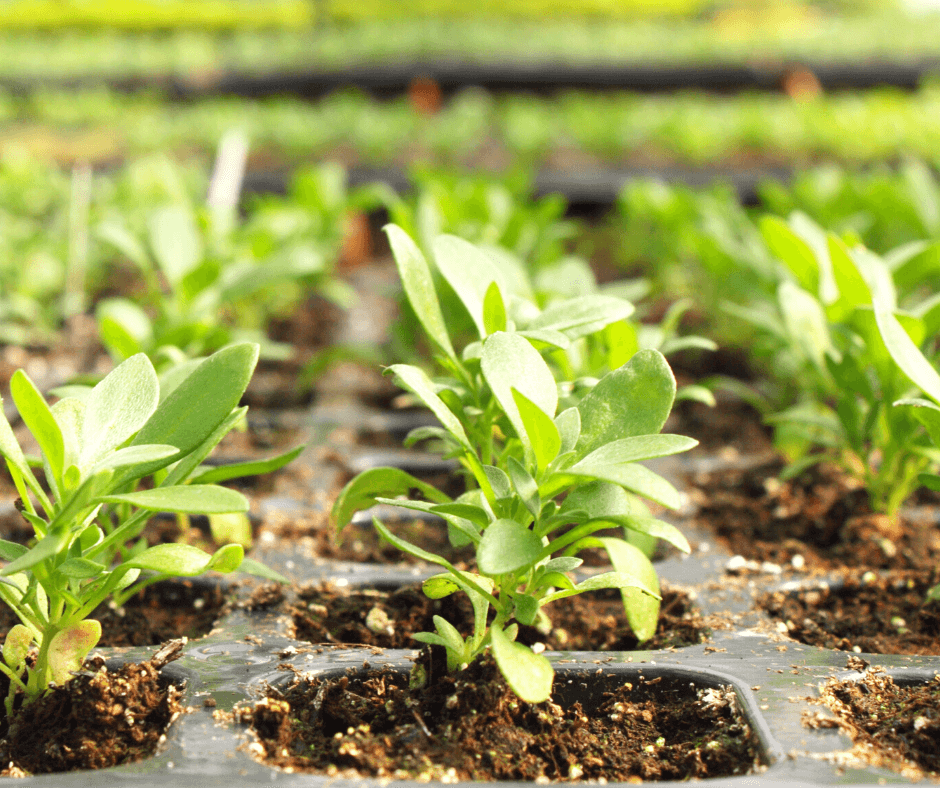 First of all, you need to buy grow lights. Plants require most wavelengths of light to feed themselves and grow, so the more full-spectrum the bulb the better. Four-foot-long shop light fixtures fitted with fluorescent grow bulbs is the most economical option, though other bulb and fixture options exist. (Click here to learn more about different grow bulbs, and Click here to learn the difference between shop light bulbs and grow light bulbs.) The best prices I have found online are for the AntLux 4ft Full Spectrum LED Shop Lights and Fixture, and the Durolux 4Ft Full Spectrum Fluorescent Lights and Fixture.
First of all, you need to buy grow lights. Plants require most wavelengths of light to feed themselves and grow, so the more full-spectrum the bulb the better. Four-foot-long shop light fixtures fitted with fluorescent grow bulbs is the most economical option, though other bulb and fixture options exist. (Click here to learn more about different grow bulbs, and Click here to learn the difference between shop light bulbs and grow light bulbs.) The best prices I have found online are for the AntLux 4ft Full Spectrum LED Shop Lights and Fixture, and the Durolux 4Ft Full Spectrum Fluorescent Lights and Fixture.
Then you will need special seed starter trays. It is a small investment, but quality starter trays can be washed and reused for many years. I recommend Delxo Seed Starting Kits with trays that have 48 individual planting cells for lots of seedlings and a watertight base tray. The kits also come with plastic covers with air vents at the top to control temperature and humidity, plus small tools, to help plant the seeds, and remove the seedlings. The kit even comes with its own labels, though I always like to have extra wooden planting labels because they are always handy.
If you reuse your trays or labels from year to year, be sure to scrub them out with hot water, dish soap, and a little bleach before using them again. Remember to rinse them well to remove any bleach residue.
 And lastly, you need a special seed starting mix, such as Black Gold Seedling Mix, which is extra fine for small or large seeds and lacks added fertilizer or salts, which can inhibit sprouting in some seeds. Our OMRI Listed Black Gold Seedling Mix also has an added organic wetting agent, to keep it from repelling water when dry, and it contains RESiLIENCE, a special silicon additive that is believed to promote better root growth, denser branching, and faster recovery should you forget to water.
And lastly, you need a special seed starting mix, such as Black Gold Seedling Mix, which is extra fine for small or large seeds and lacks added fertilizer or salts, which can inhibit sprouting in some seeds. Our OMRI Listed Black Gold Seedling Mix also has an added organic wetting agent, to keep it from repelling water when dry, and it contains RESiLIENCE, a special silicon additive that is believed to promote better root growth, denser branching, and faster recovery should you forget to water.
Once seedlings start to put out their true leaves, you can start fertilizing them. I always choose quality, all-purpose, water-soluble fertilizer, such as Proven Winners Water Soluble Plant Food. Seedlings need gently water from the top in addition to bottom watering. Misters or small watering cans are very useful for seed starting.
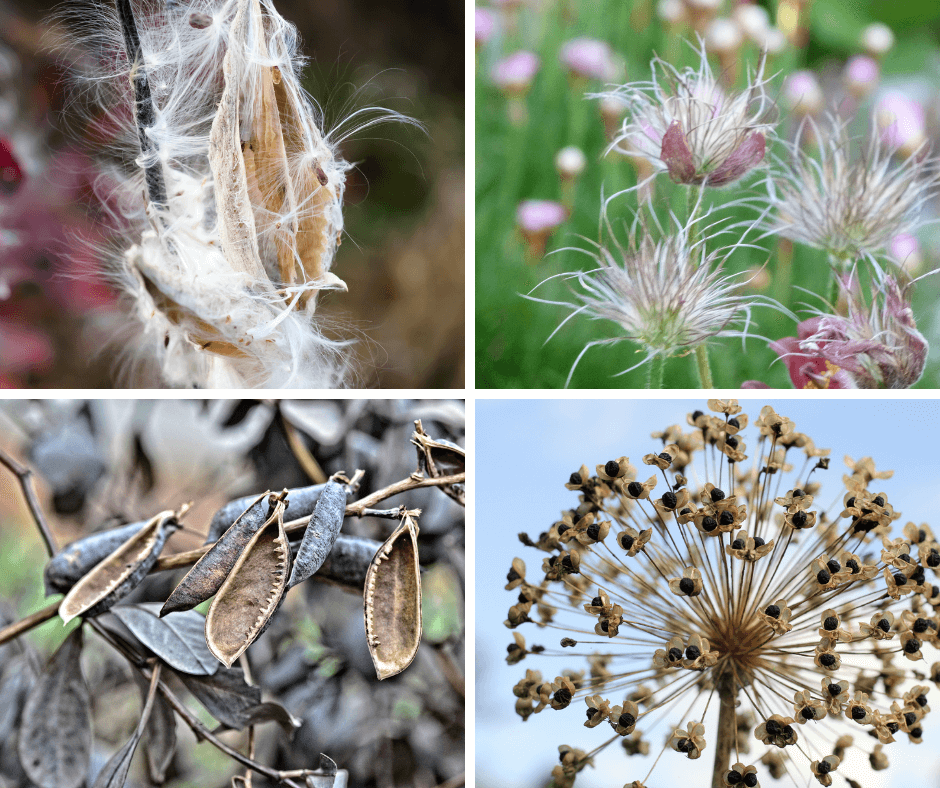
Before addressing what to grow, there are two sources for perennial seeds that I always use and highly recommend. The first is Park Seed (visit their website to request a catalog). They have a huge collection of seeds, and I have been buying from them since the early 1970s. Their seeds are always fresh, well packaged, and germinate well. The other perennial source I adore is Select Seeds. They are the only company I know of that has heirloom flower seeds, some going back to the 1600s. Their packets are filled with many seeds, and they always do well for me. Swallowtail Seeds has lots of varieties and comes highly recommended. Finally, my oldest daughter grows lots of native perennials and has recommended Prairie Moon Nursery to me on many occasions for their quality seeds. You might also try your hand at seed collecting from year to year, if you feel adventurous.

Start by reading your seed packets from cover to cover. Some perennial seeds can be planted with no preparation, but some need to be nicked or chilled in the refrigerator for several weeks to properly germinate. Those that I highlight below are not challenging to start, but It is good to know that some seeds need a little more attention.
Next, gather all of your materials. Make sure to hang your lights and prepare your growing area. I like to put down a plastic table cloth to protect any tables from leakage and for easy cleaning. Fill up your watering cans and misters, and get going.
Wash your hands before starting, to avoid any contamination. Put the seedling mix into a bowl, and wet it until uniformly moist. Fill the cells in the trays with the moistened seed starting mix, and be sure to leave a little space at the top for large-seeded perennials. (After reading the back of your seed packets, you will know if the seeds need to be covered or not.) I like to determine how big seeds are before I start planting. Some seeds are dust-like (Begonia seeds), while others are very large (perennial sunflower seeds), so some are simply sprinkled on the soil surface while others must be covered.

I like to sow two seeds per cell to make sure I get at least one seeding per cell. When working with small to medium seeds, I sprinkle two into the cell, making sure that they are separated, and then gently press the seeds down into the mix. (If both seedlings pop up, I either remove the weakest seedling after the seedlings have grown a bit, or I gently move one of the seedlings to an empty cell.)
Label the cells, either as groups or individually, marking each different flower you are growing and the date planted. Mist the seeds, but make sure that the soil is moist, not saturated. Saturated soil will cause seeds and seedlings to rot before they get a chance to grow. Put the cover on the tray, and lower the lights as close to the tray as possible. The plastic cover keeps the mix from getting dry, but aeration is also important. Sometimes I lift the cover for several hours in the day to let things dry out a little.
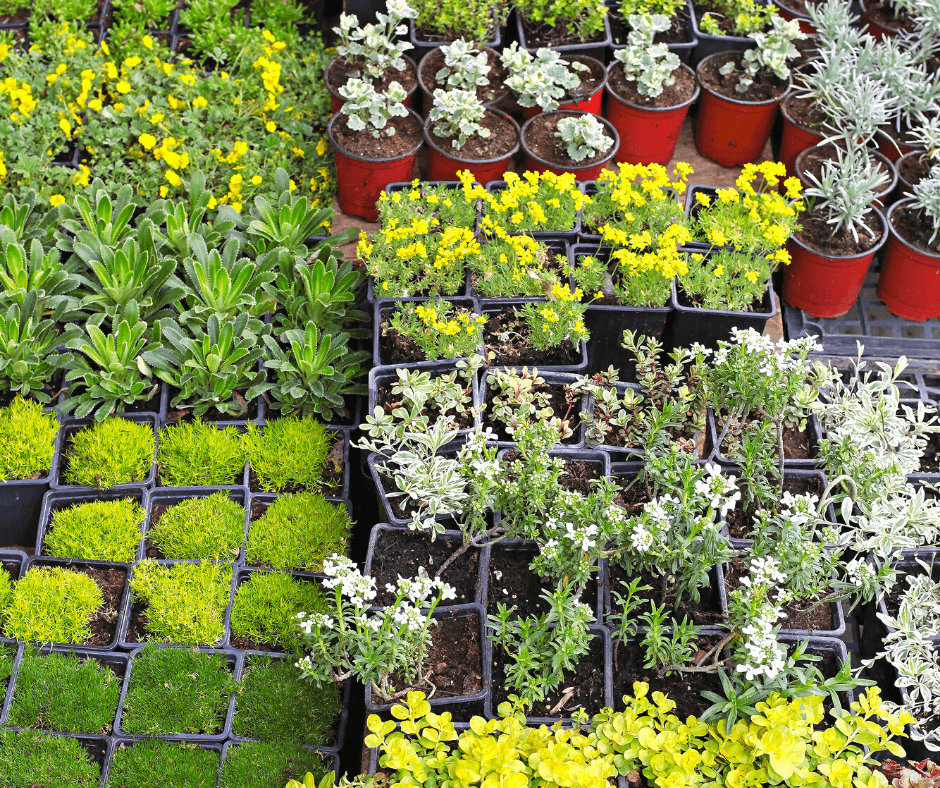
Once the seedlings have all popped up, remove the lid entirely. Too much moisture will cause damping off, or seedling rot. When you have removed the lid, keep the grow lights just inches above the small plants. This will encourage the densest growth and keep plants from becoming leggy. This is also the time to start feeding the seedlings weekly with a 1/2 strength solution of fertilizer. Fast-growing perennials may need to be upgraded into larger, 4-inch pots, some won’t. They will also require a little more water, so make sure you don’t let them get dry. Lightly moist soil is recommended. When your seedling is large enough to plant, usually 5-8 inches, and the spring weather allows, it is time to harden them off and get them planted.
When the threat of frost has passed, it’s time to move the seedlings outdoors for hardening off, which reduces shock and helps perennials acclimate them to a sunny, outdoor environment. Start by bringing the trays outside, starting with a couple of hours, and increasing it until they are well adapted to the light, wind, and temperatures of the outdoors. After a week or so of hardening off, you can plant your perennials in the garden!
New plants always grow best in a prepared bed (OMRI Listed® Black Gold® Garden Compost Blend will increase organic matter and drainage) or container filled with quality potting soil. Be sure to plant your seedlings in locations with the right sun and soil for their needs.
At planting time, be careful with your little perennials. When removing one from a cell never pull it out from the top. Instead, tip the tray partway over and push up from the bottom to release the roots. A butter knife can also be used to lift small plants from cells or loosen perennials from a 4-inch pot. fertilize time-released fertilizer for easy summer feeding.

There are lots of easy perennials that will bloom in the first year from seed. I have grown and enjoyed ‘Gay Butterflies’ butterfly weed, black-eyed Susans (Rudbeckia spp.), phlox, catmint (Nepeta spp.), asters (Symphyotrichum spp.), perennial geraniums, salvias, blanket flower (Gaillardia x grandiflora), and many other wonderful, easy perennials from seed. Over the years, they have brought me much joy and saved me lots of money! Here are growing details for a few of these.

First, I recommend growing varieties of coneflower (Echinacea spp), which is one of the easiest perennials to grow from seed. I especially recommend the AAS award-winners, ‘Pow Wow Wildberry‘, which has large, bright pink flowers, and ‘Cheyenne Spirit‘ with its mixed coneflowers in lovely sunset colors. Both will sprout in no time and bloom in the first summer. Bees and butterflies will cover the blooms. (Click here to see more varieties.)
Seed Starting: Cover seeds lightly with seed starter, and keep them lightly moist. average room temperatures between 65º and 70º F encourage good germination. Seeds should sprout within three weeks.

This tough, North American native blooms through summer with deadheading and can take the heat. Perennial blanket flower is also very easy to start from seed. There are lots of pretty varieties available, just be sure that the ones you choose are G. x grandiflora cultivars because most others are annuals. The sunny peach-flowered ‘Mesa Peach‘ is a very pretty one to try as is the red and gold ‘Arizona Sun‘.
Seed Starting: Cover seeds with a little seed starter, keep lightly moist, and maintain a fairly warm room temperature. Germination often takes one to two weeks.

Purplish salvia flowers line the upright stems of this salvia through summer with deadheading deadheaded. If plants are started in February or March, they should bloom in the first year. (Click here to see lots of seed options!)
Seed Starting: Lightly cover the seeds with seed starting mix and keep slightly moist. Place seed pots 4 inches from grow lights for best results. A heat mat can also be useful. Germination should take three weeks or more.
Click here for an article about how to grow Lavender from seed.
Click here for an article about growing milkweed from seed.
Click here for an article about growing award-winning annuals from seed.
“Hi, I have the worst time starting seeds and am not sure what I’m doing wrong. Do I need to put a heating pad under the tray and a light on top? If so, can I use a regular heating pad for under them? Can I use a regular shop light above them? I cover them with plastic wrap until the seeds sprout, which hasn’t been happening, and then it gets all moldy. I just tried a tray of rock wool with 50 seeds! All I’ve got so far is mold, no sprouts. Every year I end up giving up and buying plants from the garden center. I have a lot of seeds, I collect and trade and I’d like to be able to successfully start and grow them. Thanks for your help.” Question from Lucia of Huntington Beach, California
Answer: Seed starting takes patience. The most common mistakes that gardeners make are that they plant the seeds too deeply, they overwater them, or both. Too little water is another common problem, especially when they are just beginning to sprout. A little dry soil can mean instant death to a tiny seedling. Here are my recommendations for each of your questions followed by some excellent seed-starting resources we have.
From there, try reading a couple of these great articles about seed starting. We also have a video about starting tomato seeds below.
10 TIPS FOR SEED STARTING ON A BUDGET
DIY SEED STARTING: SEED PACKETS (PART 1 OF 6)
STARTING PERFECT HOMEGROWN PLANTS FROM SEED
Happy gardening!
Jessie Keith
Black Gold Horticulturist
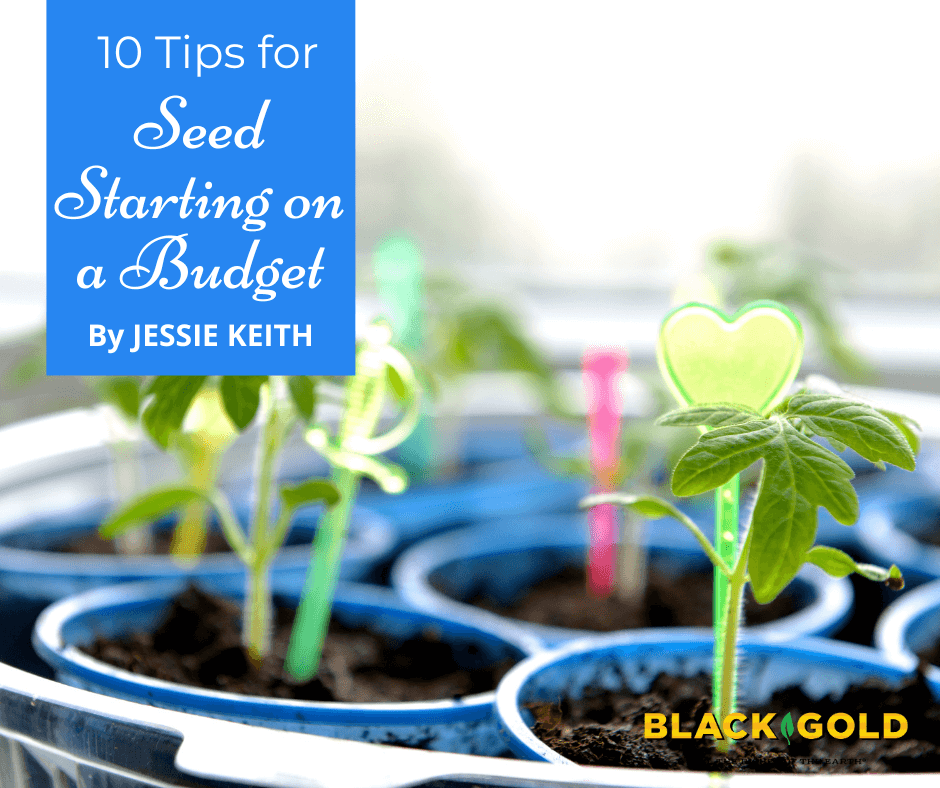
Are you low on cash but want a summer garden? No worries. Seed starting can be very inexpensive if you know where to shop, when to plant, and how to succeed with as few resources as possible. Fancy seed-starting flats are not needed, reuse instead. Pricy grow lights can be bypassed if you have sunny window sills. Some quality seed vendors are more reasonably priced than others. Here are these and more tricks for seed-starting on a budget.
(If you are new to seed starting, I recommend you read our six-part seed starting blog series.)
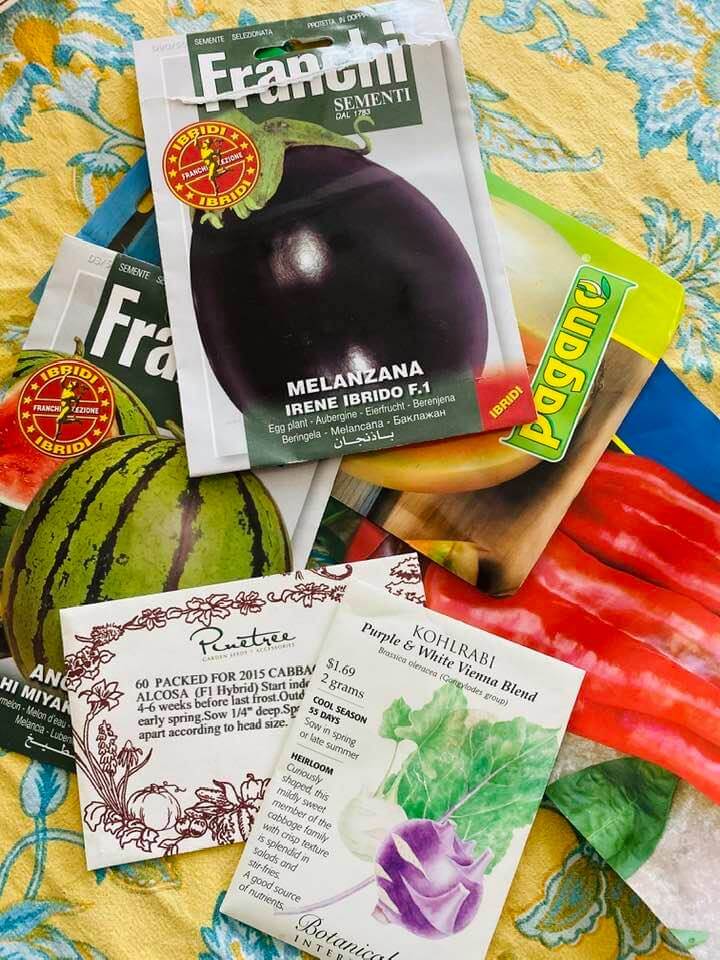
Some seed vendors sell high-quality seeds for less–for me “less” means between $1.50 and $2.50 per packet. My all-around favorite seed vendor for quality and price is Pinetree Garden Seeds. I’ve purchased from them for over 20 years, and their prices, selection, and seed quality are always outstanding. Another great, reasonable seed source is Botanical Interests (their flower seed collection is especially nice).
Other seed sellers offer lots of seeds for less. High quantity is especially useful for gardeners that grow lots of row crops, like carrots, beets, and beans. Franchi Sementi (also called Seeds of Italy) is one the best for low-cost bulk seeds. (They also have fun European vegetable varieties.) Packets may cost $4.50 each, but most contain hundreds of seeds per packet! It’s a super value. Pagano Seeds is another source that provides lots of seeds for a good price.

Seed growers must know when to sow seeds and what to sow indoors in containers or outdoors in the soil. (Click here for Johnny’s Selected Seeds’ helpful Seed-Starting Date Calculator, and click here for a list of warm-season versus cool-season vegetables.) This knowledge saves money because if you sow the wrong seeds in the wrong place at the wrong time they will die or underperform.
Plants for Indoor Sowing: Small-seeded, warm-season vegetables, herbs, and garden flowers, such as tomatoes, peppers, eggplant, salvia, petunias, impatiens, and basil, are best sown indoors in containers. I also start cabbages, kales, and lettuce indoors because they germinate better. I generally wait until plants are 6-inches tall or more before planting them.
Plants for Outdoor Sowing: Large-seeded, fast-growing plants, or those that are sown in rows, are best planted outdoors. Cool-season vegetables, like peas, carrots, beets, and radishes, can be sown outdoors in rows in early to mid-spring. Warm-season, large-seeded crops, and flowers, like beans, corn, okra, sunflowers, and zinnias, can be directly sown in fertile garden soil. I tend to start my cucumbers, melons, and squash in 4-inch pots of Black Gold Natural & Organic Potting Mix outdoors in late spring. They germinate fast, and I let them develop several sets of leaves before planting them in the ground. (Click here to learn more about preparing vegetable garden soil.)

Frugal growers can cut corners by starting seeds in reused containers. Saving pots from the previous year’s nursery purchases is always an option if you have space, but, reused containers are also useful and educational for kids (reuse, recycle!). Clear plastic ventilated clamshell containers with lids and holes for aeration are especially useful. The lids can come in handy, and once they’ve served their purpose, I just recycle the cleaned containers.
When it’s time to upgrade seedlings into their own pots, there are lots of options, such as yogurt cups, cut plastic bottles, plastic cups, or washed tin cans with holes punched in the bottoms. Be sure to wash containers with hot, soapy water and rinse well before use. Halved toilet-paper tubes, paper egg trays, or eggshell containers are options for those who prefer paper or natural containers.
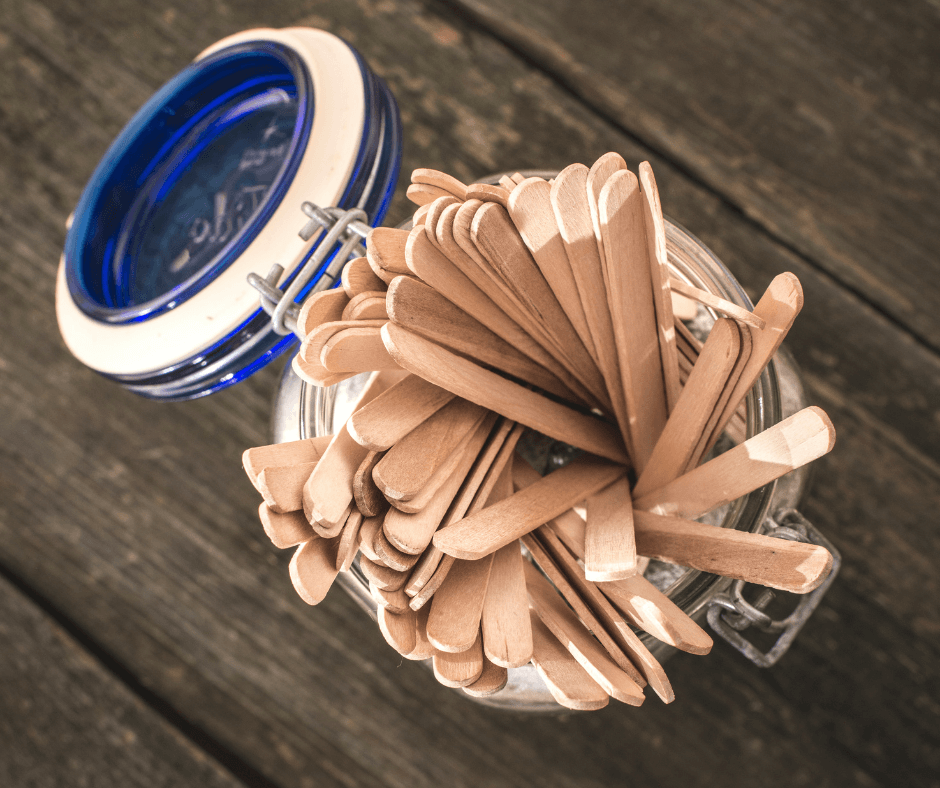
Every kid in grade school started beans or sunflower seeds in a plastic cup labeled with a Popsicle stick. You can still save the sticks as free planting labels. (These, or any wooden label, are best marked with a heavy graphite pencil.) Another option is cutting up large plastic yogurt or cottage cheese containers into strips and trimming them into 3-inch labels. Simply using a sharpy to mark the outside of a cup or container is another option, but it’s always nice to have a label that you can transfer into the garden at planting time.
The most inexpensive stakes for holding up small tomato seedlings are twigs collected outdoors and then cleaned and cut to size. Wooden or plastic stirrers can also serve as small stakes. I usually secure plants with pipe cleaners or soft twine.
If you want strong, happy seedlings, don’t skimp on soil and fertilizer. Good products will ensure good seedling growth from the start. Black Gold Seedling Mix is ideal for seed starting. If you’re starting very small seeds, it pays to purchase Black Gold Vermiculite to gently cover them. Not only does vermiculite hold water to keep the seeds from getting dry, but a gentle sprinkling also allows light to pass for seeds that require light to germinate, like lettuce. Diluted, all-purpose, water-soluble fertilizer is gentle enough for small seedlings. Fertilization is not needed until sprouts have begun to put on their second and third sets of leaves.

Using the right watering techniques, from start to finish, is essential to success. Use tepid water–seedlings don’t appreciate the shock of hot or cold water. Keep the soil just moist, never saturated, to avoid seed and seedling rot. To avoid saturated soils, mist the soil surface as needed until seeds have sprouted. Once they have sprouted and start growing, water from the bottom to encourage deep rooting and maintain dry surface soi, which discourages shore flies and fungus gnats. (Click here to learn more about these pests and their control.)
For indoor plants, the cheapest light is free sunlight that streams through south-facing windows. Ample light is required to keep seedlings from stretching towards the light and becoming long and leggy. Six to eight hours of sunlight should be enough. If you have too little sunlight, fluorescent lights in a shop-light fixture are the least expensive supplemental lighting option. Some fluorescent bulbs are specially designed for plant growth and cover up to 94% of the light spectrum. In general, fluorescent bulbs are not very strong, so they must be placed just inches above plants for best reception and growth. Shop lights are easily set up above a basement bench, along a shelf, or in an informal office space.
Hardening off seedlings prepares them for the travails of the outdoors. (Hardening off means acclimating seedlings from their cushy indoor growing conditions to the windy, sunny outdoors where temperatures fluctuate.) Indoor-grown seedlings are tender, weak stemmed, and need time to adjust. If planted in a tender state, they may develop leaf burn, suffer stem breakage, and die. Harden them off for at least a week before planting. Place the potted plants in a protected spot that gets a few hours of sun per day. Then move them a little more towards the light and in the wind each day. After a week or so, they should be tough enough to plant in the garden.
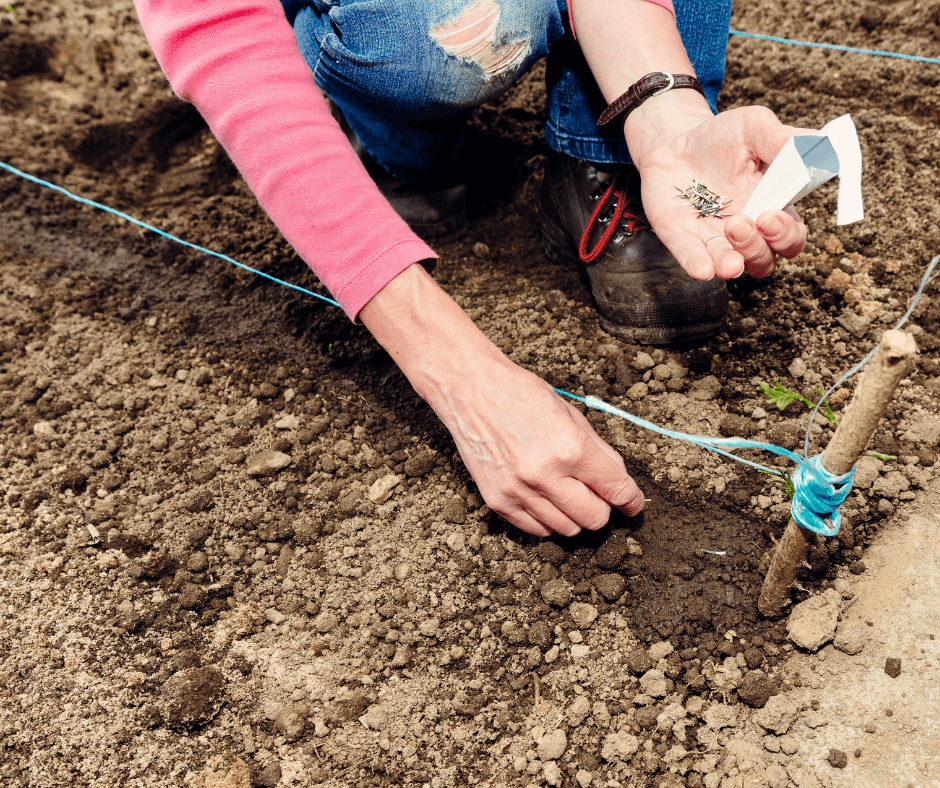
It pays to know when to plant what outside. If your timing is off, excess cold or heat can be deadly.
Spring and Fall Vegetables: Cool-season vegetables, seeds and starts, can be directly sown in the ground in spring as soon as the soil can be worked. Amend the soil with Black Gold Garden Compost Blend, label rows, and cover newly planted seeds with a light layer of compost before watering them in. Keep them just moist, and they should sprout as the soil gets warmer.
 Summer Vegetables: Warm-season vegetables and herbs should be started indoors as early as the start of February, or three or more months before planting them outdoors. (Click here for an article about growing tomatoes from seed.) Plant these and warm-season row crops outdoors after the threat of frost has passed. (Click here to search for your average frost date.)
Summer Vegetables: Warm-season vegetables and herbs should be started indoors as early as the start of February, or three or more months before planting them outdoors. (Click here for an article about growing tomatoes from seed.) Plant these and warm-season row crops outdoors after the threat of frost has passed. (Click here to search for your average frost date.)
Perennials: If growing any perennials from seed, start them as early as January. Once they are ready to plant in late spring, they should be large enough for outdoor planting. Keep in mind that many perennials won’t bloom the first year from seed, while others will. [Click here to read an article about easy-to-start perennials that will bloom the first year from seed.]
Annuals: Wait until February to start flowering annuals indoors and March or April to start vining annuals, which often grow very quickly and can take over your indoor growing area. (To learn more, click here to watch the video about growing annuals from seed.)
Seed saving is easy, saves money, and ensures that your seeds have come from a reliable source (your garden!). Smart seed saving requires that you (1) allow your seeds to fully mature, (2) clean your seeds properly, (3) store your seeds correctly, and (4) know exactly what you are saving and storing. Step 4 is essential. If you are collecting seed from a known heirloom plant, you can feel pretty safe that the seedlings will perform like the parent plants. But, if you save seed from a hybrid, expect the progeny to be mysteries awaiting discovery because they may look nothing like the parent from which you collected them. (Click here to learn more about heirloom seeds, and click here for more seed-saving tips from the Seed Savers Exchange.)
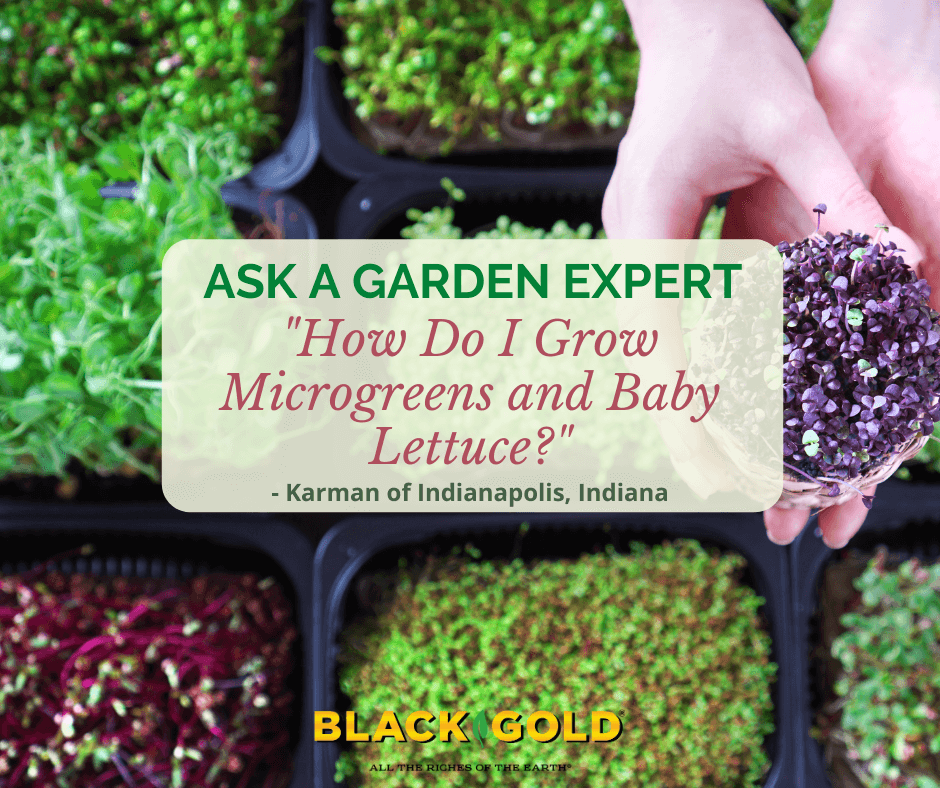
“What do you recommend for growing microgreens and baby lettuces? I am interested in buying your products at retail for now to test.” Question from Karman of Indianapolis, Indiana
Answer: We recommend growing microgreens and baby lettuce in OMRI Listed Black Gold Seedling Mix. Our seedling mix holds water well and is porous and fine, to encourage the development of small roots and shoots. To find BG seedling mix, search for stores that carry it in your area via our Store Finder or purchase it online at Ace Hardware or Urban Farmer. We also recommend purchasing seeds from a quality source, such as High Mowing Organic Seeds, Johnny’s Selected Seeds, and Truleaf Market. They all offer a wide selection of microgreen seeds.
When growing microgreens at home, we recommend starting them in well-drained flats or large seedling trays as you would start any seeds. (Click here to read our many useful seed-starting blogs.) Fill the pots with a pre-moistened seedling mix, evenly sprinkle seeds along the top at a good density, and cover the seeds with a plastic hood to keep them from drying out. Place the flats in a sunny window or beneath grow lights, then keep them lightly misted and irrigated until they have sprouted. Once they have sprouted and begun to develop second leaves, microgreens can be harvested.
When growing baby lettuce, space seeds around 1 square inch per seed, being sure to surface-sow them (lettuce seeds need light to germinate). Once the lettuce plants have sprouted and developed several sets of leaves, they can be harvested. I also encourage you to watch the video below about great lettuce varieties and how to grow them.
I hope that these tips help!
Happy gardening,
Jessie Keith
Black Gold Horticulturist
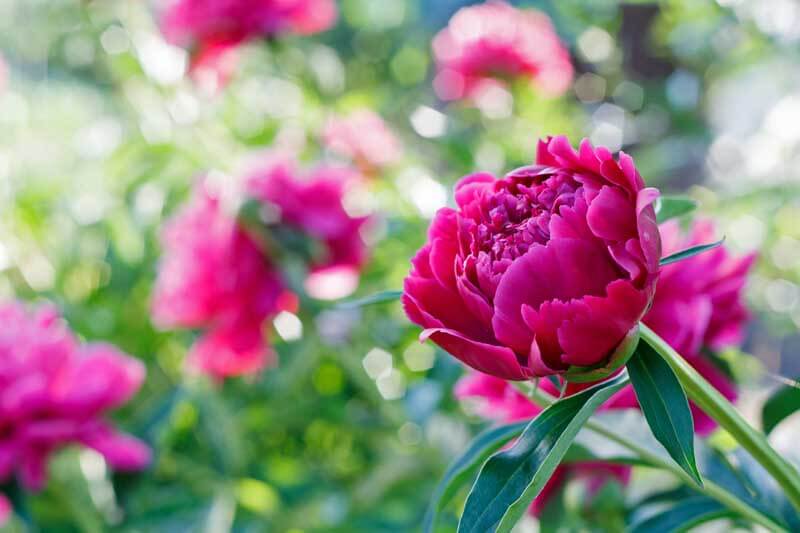 “How do you harvest and grow peony seeds?” Question from Mark of Barrie, Ontario, Canada
“How do you harvest and grow peony seeds?” Question from Mark of Barrie, Ontario, Canada
Answer: If your peonies successfully cross-pollinated and produced viable seeds that can be induced to sprout, then the plants will develop seed pods that should contain fully mature seeds in late summer or early fall. The round, tough seeds should be harvested as soon as the pods open and begin to turn brown. The seeds will be dark brown to black.
It takes time and patience to get peony seeds to sprout. Some seeds will produce seedlings in a year and others can take up to three years. Fresh seed will yield the best results. The seeds require a process called stratification, which involves a chilling period of a few months before one can try to induce the seeds to grow. In the case of peony seeds, they need a warm period, chilling period, and warm period. Stratification can be done indoors or outdoors.
The outdoor method is a little less precise and may take longer, but it often yields the best results. As soon as you harvest your seeds, soak them for three to four days in water. Change the water each day. Unhealthy seeds will float, sink, and become soft. Healthy seeds will swell, and remain round and firm.
Collect the healthy seeds, plant them 1.5 inches down, and 3 inches apart in a flat of Black Gold Natural & Organic Potting Mix. It contains peat as well as composted bark–a combination favored by peony seedlings. Count the seeds and note their placement to keep track of their progress. Also, be sure to label the flat with the planting date, name, and any other essential information. Place the flat in a safe location in partial shade. Keep it moist through the warm days of fall, then cover the top of the flat with plastic wrap in late fall, and let it remain over the winter. Remove the plastic in early spring, and keep the flat moist through spring. The seeds should begin to sprout by mid to late spring. When they emerge, feed them lightly with a water-soluble, all-purpose fertilizer as soon as their second (true) leaves emerge. Once they reach a few inches, you can transplant them to pots or a location in the garden with good soil. You will need to baby them as they grow. It may be wise to protect them with chicken wire or plastic collars. Placing diatomaceous earth around them should also keep snails and slugs away.
Some seeds may not sprout in the first year. If this is the case, keep the flat in place, maintain moisture through summer, and repeat the stratification process in fall and winter.
Take your healthy peony seeds indoors, place a few in a 4-inch pot filled with Black Gold Seedling Mix. Moisten the pot, and place it under grow lights for a month and a half. Keep the pot moist and make sure the indoor temperature is between 70 and 80 degrees F. After a month, place the pot in an air-filled plastic bag in the refrigerator. The best temperature for stratification is 40 degrees F. Moisten the pot every couple of weeks while it is in the refrigerator–don’t let it get dry. After three months, remove and place it under grow lights. Keep the pots lightly moist, maintain a temperature between 70 and 80 degrees F, and the peony seeds should sprout in a month or two. A heat mat set to warm can help. (Please click here for more detailed information about how to start seeds indoors.)
The American and European Peony Societies are great information resources for additional information. (Click here to read the EU Peony Society’s highly detailed PowerPoint about peony seed starting.)
Happy gardening,
Jessie Keith
Black Gold Horticulturist

“What is the best way to plant wildflower seeds. I am preparing a spot on a sunny hill, taking the grass and roots out down to the dirt. I know I have to mix the seeds with sand. Are there any other tips on making them thrive? I appreciate the advice. Thank you.” Question from Lexy of Weare, New Hampshire
Answer: There are some tricks to getting wildflower seed to become established when sown outdoors. For success, please follow these wildflower sowing tips from the western horticulturist, Maureen Gilmer.
Provide water during dry periods. If rains are poor, use a sprinkler to create rain-like irrigation every couple of weeks during the winter and early spring.
Happy gardening!
Jessie Keith
Black Gold Horticulturist

Tomatoes are America’s #1 garden vegetable and growing your own from seed has its advantages. It allows you to grow the newest, coolest seed catalog varieties of your choice and helps ensure stock is disease-free at planting time.
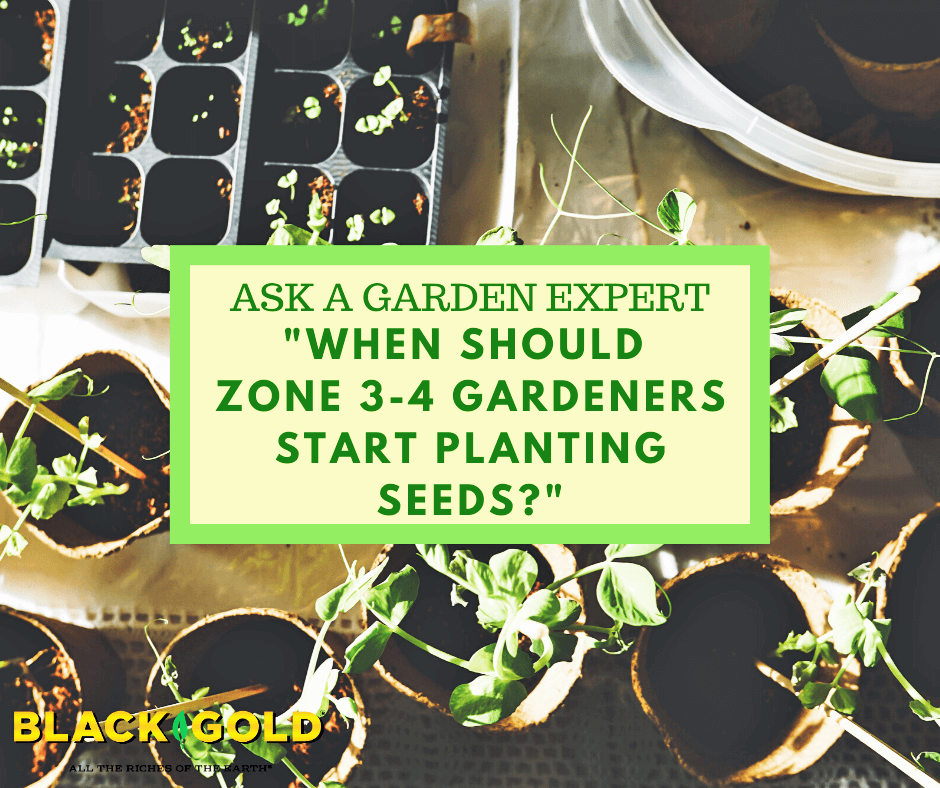
“How late can one start seeds inside for planting a garden in Zones 3-4?” Question from Jill of Greybull, Wyoming
Answer: It depends on what you are planting. Some crops are fast-growing, yielding vegetables or flowers in a matter of weeks (please see the video below). Others take more time and need the warmth of summer to grow to full potential. For indoor seed-starting we recommend planting in natural & organic Black Gold Seedling Mix.
Start warm-season vegetables no later than early March. When you have a short growing season, it is important to jump-start the season by getting warm-season, summer vegetables planted and growing inside early. The bigger your tomatoes, peppers, beans, and even pumpkins and melons at planting time, the better. Get them planted outside as soon as possible, after your last frost date.
Start cool-season vegetables any time from spring to late summer. Cool-season vegetables, like greens, cabbage, carrots, and peas, can be planted from spring through fall.
Here are some more Q&A blogs for northern gardeners that you may consider reading.
Happy gardening!
Jessie Keith
Black Gold Horticulturist

“I start my seedlings indoors. How do I keep them from shooting up 6 inches with a weak stem before I can get them outdoors?” Question from Jerry of Lead, South Dakota
Answer: This is all about providing lots of high-quality light from start to finish. When light is insufficient, seedlings will reach and stretch towards the source, which results in elongated, leggy shoots and poor overall color and growth.
If you’re growing your plants beneath grow lights, be sure that they provide a broad spectrum of light. Keep your seedlings as close to the light as possible without putting them in danger of heat damage. There are lots of high-spectrum lights to choose from. (Click here to read an article about the best lighting choices for indoor plant growing (and seed starting).)
If you start your seeds along a sunny windowsill, make sure that it is south-facing. Place your seedlings as close to the pane as possible and consider fortifying their light with high-spectrum bulbs for plant growing.
To read more about successful seed starting, read our article Producing Perfect Homegrown Plants from Seed.
Happy gardening!
Jessie Keith
Black Gold Horticulturist